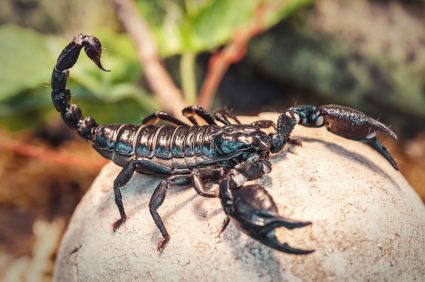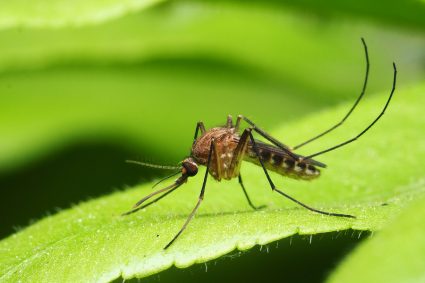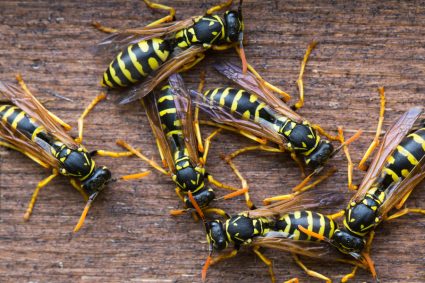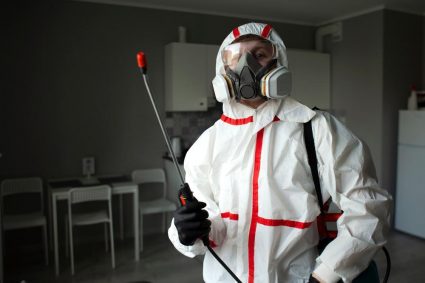
Cypermethrin is a synthetic pyrethroid insecticide used in large-scale commercial agricultural applications as well as consumer products for domestic purposes. Its primary function is to control a wide array of insects that pose a threat to crops, livestock, and human health.
Cypermethrin is a synthetic pyrethroid insecticide that’s effective against a wide range of pests. These include spiders, wasps, ants, fleas, boxelder bugs, cockroaches, mosquitoes, lice, ticks, mites, bedbugs, termites, scorpions, and various insects from the orders Lepidoptera, Coleoptera, Diptera, and Hemiptera. It works by disrupting the normal functioning of the pests’ nervous system, leading to hyperactivity, paralysis, and death.
What Pests Does Cypermethrin Target?
Cypermethrin is known for its effectiveness against numerous pests, including:
- Spiders
- Wasps
- Ants (including carpenter and fire ants)
- Fleas
- Boxelder bugs
- Cockroaches
- Mosquitoes
- Lice
- Ticks
- Mites
- Bedbugs
- Termites
- Scorpions
- Insects from the orders Lepidoptera, Coleoptera, Diptera, and Hemiptera
The versatility of cypermethrin is what makes it a popular choice in various settings, from agricultural fields to residential homes.
How Does Cypermethrin Work?
Cypermethrin works by disrupting the normal functioning of the nervous system in pests. It binds to specific sites on the sodium channels in insect nerve cells, slowing the activation and inactivation of the channel. This disruption leads to hyperactivity at low concentrations, and paralysis and death at higher concentrations. The toxic effects of cypermethrin on pests occur through contact or ingestion.
Is Cypermethrin Safe for Humans and Pets?
While cypermethrin has low toxicity to humans and is generally safe to use around pets when applied as directed, excessive exposure can cause symptoms such as nausea, headache, muscle weakness, salivation, shortness of breath, and seizures. In pets, cypermethrin is generally safe when used as directed. However, it is toxic to cats, as they do not tolerate therapeutic doses for dogs due to a deficiency in the enzyme responsible for breaking down cypermethrin in their bodies.
How to Use Cypermethrin Safely?
To use cypermethrin safely and effectively, it’s important to:
- Follow the product label instructions.
- Wear appropriate personal protective equipment (PPE) when handling and applying cypermethrin.
- Apply only to the targeted pests and areas specified on the label.
- Be cautious when using cypermethrin near water sources, as it is highly toxic to fish and aquatic invertebrates.
- Store cypermethrin in a cool, dry place, away from food, drink, and animal feeding areas.
What Are Alternatives to Cypermethrin?
Alternatives to cypermethrin include Acetamiprid, Imidacloprid, Thiacloprid, Azadirachtin, Deltamethrin, Permethrin, and Lambda-cyhalothrin. These alternatives vary in their properties and levels of toxicity to aquatic life and bees.
In conclusion, cypermethrin is a versatile and effective insecticide that can control a wide range of pests. However, it’s essential to use it responsibly to minimize the risks to human health and the environment. Always follow the product’s instructions and seek professional advice if you’re unsure about its application.
Frequently Asked Questions
Can I use Cypermethrin on my vegetable garden?
Yes, Cypermethrin can be used on a vegetable garden to control pests. However, it is important to follow the manufacturer’s instructions regarding the application rate and the waiting period before harvest, to ensure the residue levels are safe for consumption.
How long does Cypermethrin last once applied?
Cypermethrin has a residual effect that can last for weeks or even months, depending on the surface where it has been applied and the environmental conditions. However, exposure to sunlight and rain can degrade it more quickly.
Is Cypermethrin harmful to bees?
Yes, Cypermethrin is harmful to bees. It is recommended to apply it in the early morning or late evening when bees are less active, and avoid direct application on flowering plants to minimize exposure.
Can I use Cypermethrin indoors?
Yes, Cypermethrin can be used indoors to control pests like cockroaches, ants, and bedbugs. However, it should be used with caution, ensuring good ventilation and keeping it out of reach of children and pets.
What should I do if I accidentally ingest Cypermethrin or get it in my eyes?
If Cypermethrin is accidentally ingested or gets into the eyes, it’s essential to seek immediate medical attention. Rinse the mouth or eyes thoroughly with water and contact your local poison control center or healthcare provider for further instructions.












